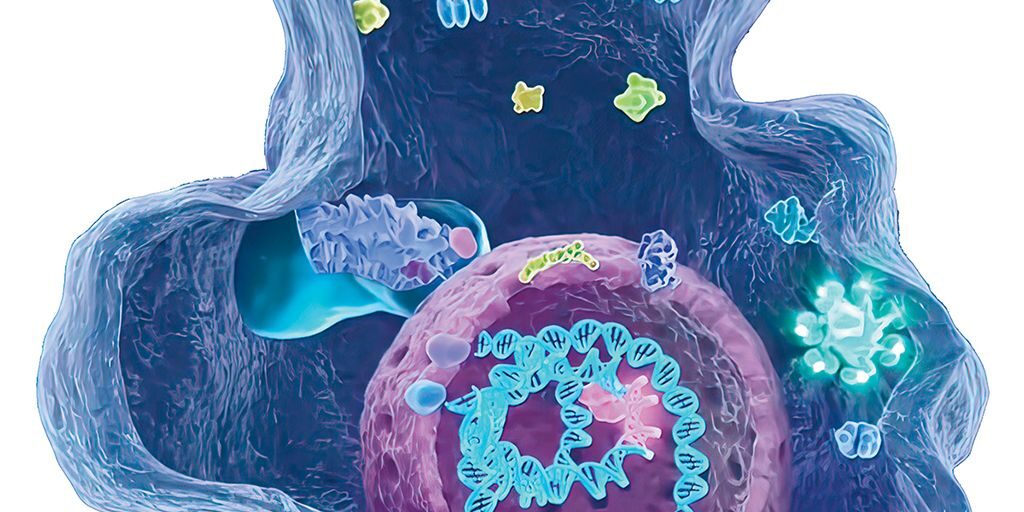
Q&A: Understanding Metabolic Myopathies
By MDA Staff | Friday, November 17, 2023
Metabolic myopathies are a general category of disorders characterized by muscle cells that don’t function properly, leading to muscle weakness. “Metabolism” is the over-arching term for how cells use chemical processes to convert substances, like carbohydrates, fats, and proteins, into energy. When one or more of those processes breaks down, the cell can’t do its job as effectively.

Mark Terrelonge, MD
In muscle cells, there are several ways that metabolism can fail. They generally fall into three categories: failure to process carbohydrates, failure to process fats, and a failure in the mitochondria — the cell’s “powerhouse” that is responsible for generating energy. These failures occur because a critical enzyme is either missing or too low.
We spoke with Mark Terrelonge, MD, Assistant Professor of Neurology at the University of California at San Francisco Weill Institute for Neuroscience, to better understand metabolic myopathies.
What are metabolic myopathies?
Whenever things affect the metabolism of the muscle, they usually affect how the muscle can deal with energy. Energy could come from different sources. In metabolic myopathies, there are issues with the machinery responsible for turning those different energy sources into the actual energy.
What conditions fall under this umbrella?
Different conditions are labeled based on the type of energy source that is inhibited or isn’t working. There are disorders of glycogen metabolism (such as Pompe disease or myophosphorylase deficiency, also known as McArdle’s Disease), which have to do with how glycogen is stored and turned into energy. There are disorders of lipid metabolism, which have to do with the way that fatty acids are turned into energy. Carnitine palmitoyltransferase deficiency is a relatively common example of lipid metabolism disorder.
Mitochondrial diseases are not necessarily specific to muscle — they normally have multisystem manifestations. So, while many of the enzymes described in the other diseases are muscle-specific, enzymatic changes in the mitochondria can cause muscle disease and issues with the nerves, brain, liver, or other body parts. For example, one mitochondrial disease, Kearns-Sayre syndrome, is specific to muscle cell mitochondria. But other mitochondrial disorders can cause neuropathy, ataxia, or retinitis pigmentosa.
What are the symptoms of metabolic myopathies?
Usually, it shows as muscle weakness. One of the most frequent presentations is exercise intolerance — when someone has to exert themselves more than they would for normal daily movement, such as walking. This activity stresses their system and causes energy failure, which can lead to either weakness or, in some cases, issues with having dark urine or other problems. Some people will say that they just feel “generalized fatigue.” Others will feel that their muscles are actually failing. And though it is rare, some people’s breathing is affected.
What causes these conditions?
Generally, these tend to have a genetic basis, but some may be acquired. Most metabolic diseases have a recessive pattern, meaning a person must inherit two copies of the flawed gene — one from each parent. But some metabolic diseases may be autosomal dominant, which means a person has to inherit a flawed gene from only one parent to have disease symptoms. There are no risk factors for those who don’t have a hereditary basis — the disease arises spontaneously.
When are they typically diagnosed?
Frequently, people are diagnosed when they’re children, but many types first manifest in the teenage or adult years. It could be that until that age, some people haven’t had a sufficient challenge that has caused the muscle weakness to become apparent. Or for some of the mitochondrial diseases, more mitochondria can become involved over time, so an affected person hits a point where their typical activities become harder.
Infections or changes in eating habits, such as fasting, also can cause the symptoms to present for the first time. For example, somebody may have a viral illness, feeling weak or fatigued, and they think that it’s the virus when really the metabolic disease has reached a tipping point in terms of how much stress their body could take. This can happen for those with either the genetically based illness or one they acquired.
How does a metabolic myopathy affect the people who live with it? What are some of the specific challenges they live with?
Depending on the specific type of metabolic changes a patient has, a patient may feel fine between bouts of exercise, but when they exercise, it leads to cramps, muscle pain, or dark urine. Other patients may have more fixed muscle weakness, leading to difficulty participating in activities of daily living. Patients with mitochondrial diseases may have multisystem involvement that can cause changes in vision, cognition, gastrointestinal transit, or hearing, among other things.
Are there dietary or lifestyle modifications that could benefit those living with it?
Depending on the kind of disorder — which is why it’s important to identify a specific type — we have strategies for supplements or dietary modifications in addition to medications.
For example, with Pompe disease, the patient can be given enzymes to help with some of its manifestations, such as respiratory changes.
For somebody with a glycogen storage disease, when they choose to eat carbohydrates in relationship to when they’re exercising or exerting themselves can have major impacts on how they manifest weakness. The same thing is true for those with lipid disorders. For others, having frequent small meals with fast-acting carbohydrates might be helpful, while others may need more long-acting carbs; it really depends on the specific disease.
What is the current care plan for people living with metabolic myopathies? How does care change as the disease progresses?
Generally, the best care plan is avoidance of the stressors that make people feel worse, such as over-exercising or long stretches of exercising. Avoiding fasting can be very, very important. Unless they have a myopathy that can affect the heart or lungs, people can use behavioral changes to manage the disease and not need additional mobility devices in the long term. For those with conditions that lead to progressive weakness, such as Pompe disease, some of those patients might need a cane, walker, or wheelchair, depending on their progression. For myopathies with respiratory manifestations, though, patients might need to use noninvasive ventilators or other assistance devices like BiPAP or two-level airway pressure, for example, to help them take deeper breaths.
Are there any recent advances in treatment or disease management?
In September 2023, the US Food and Drug Administration (FDA) approved cipaglucosidase alfa-atga (Pombiliti) plus miglustat (Opfolda) for adults living with late-onset Pompe disease (LOPD). For acid maltase deficiency, the standard of care treatment includes the use of alglucosidase alfa, which leads to improved outcomes in patients with infantile and adult-onset forms. A newer enzyme, avalglucosidase alfa, was approved in 2021 and has improved cellular uptake and muscle targeting.
What treatments are on the horizon?
There is research on supplements that may help with metabolism when patients are missing specific enzymes. Mitochondrial disease researchers are investigating peptides that may target mitochondria and change the way they work (but this is not the full spectrum of patients with these diseases). Lastly, gene therapy may be on the horizon, but no active trials are underway as of now.
10 common metabolic myopathies
Here is a list of 10 common types of metabolic myopathies, which are distinguished by the enzyme deficiency they cause.
- Acid maltase deficiency (AMD, Pompe disease, glycogenosis type 2, lysosomal storage disease)
- Carnitine deficiency
- Carnitine palmityl transferase deficiency (CPT deficiency)
- Debrancher enzyme deficiency (Cori or Forbes disease, glycogenosis type 3)
- Lactate dehydrogenase deficiency (glycogenosis type 11)
- Myoadenylate deaminase deficiency
- Phosphofructokinase deficiency (tarui disease, glycogenosis type 7)
- Phosphoglycerate kinase deficiency (glycogenosis type 9)
- Phosphoglycerate mutase deficiency (glycogenosis type 10)
- Phosphorylase deficiency (McCardle disease, myophosphorylase deficiency, glycogenosis type 5)
Next Steps and Useful Resources
- Browse our Diseases A-Z library of disease-specific content.
- Read more of the Quest Spotlight series on rare diseases.
- Stay up-to-date on Quest content! Subscribe to Quest Magazine and Newsletter.
TAGS: Drug Approval, Drug Development, Featured Content, Research, Research Advances, Spotlight
TYPE: Featured Article
Disclaimer: No content on this site should ever be used as a substitute for direct medical advice from your doctor or other qualified clinician.




